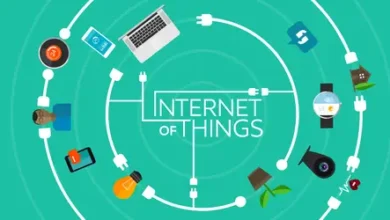Advances In Quantum Computing – List of Breakthroughs in the Technology

Advances in Quantum Computing are progressing rapidly. They offer unprecedented computational power by leveraging the principles of quantum mechanics. As companies and research institutions push the boundaries of this technology, breakthroughs are paving the way for advancements in cryptography, optimization, and complex simulations. Checkout the article to know more about potential of quantum mechanics. Below is a table highlighting key advances in quantum computing technology.
| Breakthrough | Organization | Description | Impact |
|---|---|---|---|
| Quantum Supremacy | In 2019, Google announced it had achieved quantum supremacy, where a quantum computer solved a problem that would take classical computers thousands of years. | Major step towards demonstrating the power of quantum computers over classical systems. | |
| IBM Q System One | IBM | IBM introduced the world’s first integrated quantum computing system for commercial use in 2019. | It brought quantum computing closer to business and commercial applications. |
| Topological Qubits | Microsoft | Microsoft is developing topological qubits, which are more stable and less prone to errors compared to traditional qubits. | Could significantly enhance error correction in quantum systems. |
| Honeywell’s Quantum Computer | Honeywell | Honeywell released a quantum computer with a quantum volume of 64, surpassing many competitors in terms of computational power. | Set a new benchmark for quantum volume, pushing the boundaries of quantum computing performance. |
| Quantum Error Correction Codes | Various Institutions | Researchers have developed advanced error correction codes to reduce quantum noise, which hinders computational stability. | These codes are essential for making large-scale, fault-tolerant quantum computers a reality. |
| Quantum Internet | Chinese Academy of Sciences | China launched the first quantum satellite, demonstrating quantum entanglement over vast distances to enable quantum communication. | Potential to create an ultra-secure communication network that is impervious to eavesdropping. |
| Quantum Algorithms | Various Research Labs | Significant progress has been made in developing quantum algorithms that can solve complex problems more efficiently than classical algorithms. | These algorithms could revolutionize fields like cryptography, optimization, and AI. |
| Photonic Quantum Computing | Xanadu | Xanadu is leading research into photonic quantum computing, which uses light particles (photons) for computation. | Photonic systems offer potential scalability and faster quantum computation capabilities. |
1. Quantum Supremacy by Google
Organization: Google
Description: In October 2019, Google made headlines by claiming to have achieved “quantum supremacy” using their 54-qubit quantum processor, Sycamore. This achievement involved solving a specific mathematical problem in 200 seconds. A task that Google estimated would take the world’s most powerful supercomputer, IBM’s Summit, around 10,000 years to complete. The concept of quantum supremacy refers to the point where a quantum computer can perform a computation that is beyond the capabilities of classical computers.
Technical Details: Sycamore’s quantum circuit relies on quantum entanglement, superposition, and interference to process information in ways classical computers cannot. The problem Google solved involved generating random numbers through a specific quantum algorithm. This highlights the computational power of quantum systems, though the problem itself had little real-world application.
Impact: While the result was more of a demonstration than a practical breakthrough, it showed the immense potential of advances in quantum computing. Future applications could include drug discovery, materials science, cryptography, and artificial intelligence. It also intensified the race among tech companies and research institutions to harness quantum computing’s real-world power.
2. IBM Q System One
Organization: IBM
Description: IBM launched the IBM Q System One in January 2019. It was the first integrated quantum computing system made available for commercial use. Housed in a glass cube, the Q System One uses superconducting qubits. This must be maintained at extremely low temperatures close to absolute zero. The system was designed to enable cloud-based access to IBM’s quantum computers. It allows enterprises, researchers, and developers to explore quantum algorithms and applications.
Technical Details: The Q System One operates with superconducting qubits. These are made from materials that exhibit quantum properties at ultra-low temperatures. The challenge lies in error correction, as qubits are sensitive to external disturbances, leading to decoherence and computational errors. IBM has made strides in improving qubit stability and reducing noise.
Impact: The introduction of IBM Q System One marked the transition of advances in quantum computing from theoretical research to practical, accessible applications. By providing access to quantum computing via the cloud, IBM enabled businesses to begin experimenting with quantum computing for real-world problems. This includes optimization, finance, and complex simulations in chemistry and materials science.
3. Topological Qubits by Microsoft
Organization: Microsoft
Description: Microsoft is pursuing a unique approach to advances in quantum computing through the development of topological qubits. Unlike other qubit technologies that are prone to errors due to environmental noise, topological qubits are theoretically more stable because they store information in non-local quantum states. Microsoft’s quantum research focuses on creating a fault-tolerant quantum computer that can scale up while minimizing the need for error correction.
Technical Details: Topological qubits are based on the principles of topology in mathematics, where the qubit’s quantum state is spread across a material in such a way that it’s less likely to be disturbed by noise. This qubit design promises fewer errors, meaning fewer resources would be needed to correct errors during quantum calculations, a significant bottleneck for quantum systems today.
Impact: Microsoft’s focus on topological qubits could be a game changer if successful, as it would enable more stable quantum computing with fewer resources required for error correction. This can accelerate the development of more practical advances in quantum computing. For instance, in fields like cryptography, drug discovery, and artificial intelligence, making quantum computers more accessible and scalable for industrial use.
4. Honeywell’s Quantum Computer
Organization: Honeywell
Description: Honeywell has made significant advancements in quantum computing, focusing on increasing quantum volume. A metric that takes into account the number of qubits, error rates, and the complexity of quantum operations a system can perform. In 2020, Honeywell released a quantum computer with a quantum volume of 64, surpassing competitors in terms of both qubit count and error rate.
Technical Details: Honeywell’s quantum computer uses trapped-ion technology, where ions are trapped and manipulated using electromagnetic fields. The quantum volume of 64 was achieved by improving the fidelity of operations (reducing errors). It demonstrates the ability to perform more complex quantum algorithms.
Impact: Honeywell’s advancements in quantum volume demonstrate the scalability of quantum systems. This is critical to solve more complex problems in fields like logistics, chemistry, and machine learning. Honeywell’s focus on trapped-ion technology also provides an alternative approach to superconducting qubits, broadening the technological foundations of the quantum industry.
5. Quantum Error Correction Codes
Organization: Various Institutions
Description: Quantum error correction is essential for practical quantum computing because quantum systems are highly sensitive to noise and interference, leading to errors. Traditional error correction methods used in classical computing don’t work for quantum systems. This is due to the unique properties of qubits, such as superposition and entanglement. Researchers have developed quantum error correction codes (QECCs) that protect quantum information from errors by encoding it into multiple qubits.
Technical Details: One of the most widely researched quantum error correction codes is the surface code. This distributes quantum information across a grid of qubits. By monitoring the relationships between qubits rather than the qubits themselves, the surface code can detect and correct errors without disturbing the quantum state. Other codes, such as the Bacon-Shor code and Steane code, offer different strategies for reducing error rates.
Impact: Quantum error correction is a critical milestone in making large-scale, fault-tolerant quantum computers a reality. It addresses one of the main challenges in quantum computing: the tendency for qubits to lose information due to decoherence. Progress in QECCs will lead to more stable and reliable quantum systems, allowing quantum computers to solve real-world problems with high accuracy.
6. Quantum Internet by China
Organization: Chinese Academy of Sciences
Description: In 2016, China launched the world’s first quantum communication satellite, Micius. This demonstrated the feasibility of long-distance quantum communication via quantum entanglement. The satellite enabled the establishment of a quantum-secure communication network between ground stations in China and Europe. It provides unprecedented security for data transmission.
Technical Details: The key technology behind quantum communication is quantum key distribution (QKD). It uses the principles of quantum mechanics to generate and share cryptographic keys between parties. Any attempt to intercept the key would disturb the quantum state, alerting both parties to the eavesdropping attempt. Micius used entangled photons to establish QKD over distances of up to 1,200 kilometers.
Impact: The development of a quantum internet is based on secure quantum communication networks. This can revolutionize data security by providing a virtually unhackable communication system. This technology has immense implications for governments, financial institutions, and other organizations that handle sensitive information.
7. Quantum Algorithms
Organization: Various Research Labs
Description: Quantum algorithms leverage the unique properties of quantum systems to solve complex problems that classical algorithms struggle with. One of the most famous quantum algorithms is Shor’s algorithm. This can factor large numbers exponentially faster than classical algorithms, posing a potential threat to current cryptographic systems. Another key algorithm is Grover’s algorithm, which offers quadratic speedup for searching unsorted databases.
Technical Details: Quantum algorithms use principles such as superposition, entanglement, and quantum parallelism to process information in ways that classical computers cannot. Quantum speedups arise because quantum systems can explore multiple possibilities simultaneously, whereas classical systems must evaluate each possibility sequentially. Researchers are continually exploring new quantum algorithms for applications in optimization, machine learning, and material science.
Impact: Quantum algorithms have the potential to revolutionize many industries, particularly in fields requiring high computational power. Shor’s algorithm, for example, could break widely used encryption methods, prompting the development of post-quantum cryptography. Quantum machine learning algorithms also hold promise for accelerating artificial intelligence development.
8. Photonic Quantum Computing by Xanadu
Organization: Xanadu
Description: Xanadu is pioneering photonic quantum computing, which uses light particles (photons) rather than electrons or ions to perform quantum calculations. Photonic systems have several advantages, including the ability to operate at room temperature and easier integration with existing telecommunications infrastructure.
Technical Details: In photonic quantum computing, photons are manipulated using beam splitters, phase shifters, and other optical components. One key technology is boson sampling, where photons are passed through a network of beam splitters, and the output distribution is measured. While boson sampling is not a universal quantum computation model, it provides a benchmark for demonstrating quantum advantage in specific tasks.
Impact: Photonic quantum computers have the potential to scale more easily than systems based on other qubit technologies. This makes them attractive for industrial and commercial applications
Summing Up
Quantum computing is progressing at an extraordinary pace, with breakthroughs from companies like Google, IBM, Microsoft, and Honeywell pushing the boundaries of what is possible. From achieving quantum supremacy to developing error-correction techniques, each breakthrough is a step towards realizing the full potential of quantum computing. As the technology continues to evolve, it promises to revolutionize industries such as cryptography, artificial intelligence, drug discovery, and secure communications.
While challenges remain – such as improving qubit stability and scalability – ongoing advancements in both hardware and algorithms are bringing us closer to practical, large-scale quantum computing systems. The future holds exciting possibilities as more institutions invest in quantum research, and it’s only a matter of time before quantum computers become an integral part of solving some of the world’s most complex problems.





